How to choose the right grow lamps?
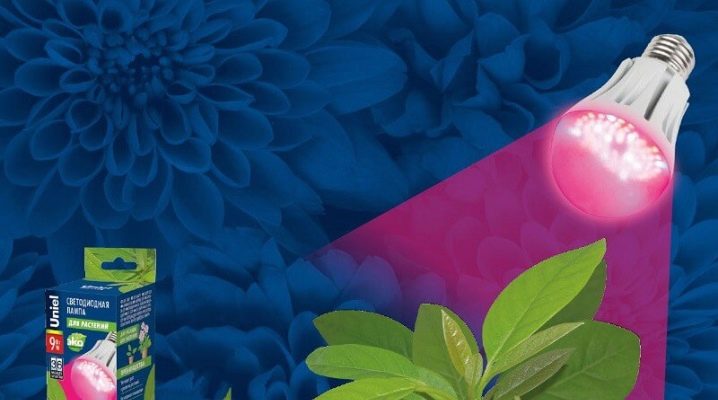
In order for the plants to feel good and continue to delight with flowering, phytolamps must be additionally turned on above them.
On the market, this equipment is presented in a wide range, the main thing is to know how to choose it correctly and how the lamps differ from each other.


Design features
Phytolamps are not just lighting, they help plants develop normally when the sunny day becomes short and the process of photosynthesis slows down. By design and principle of operation, they are of the following types:
- sodium;
- induction;
- fluorescent;
- halogen;
- incandescent;
- LED.
Sodium lamps are completely unsuitable for small spaces, as they have a large coverage area and very bright light that spreads out in all directions. Mirror coating is applied inside. One square meter requires a power of 100 watts.

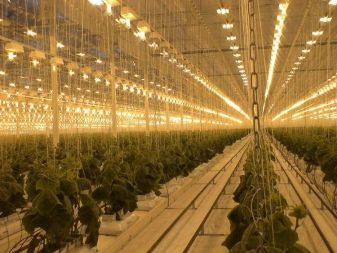
If we highlight the advantages of this type of lamps, then they have a useful efficiency, can please the user with a long service life and good light output. Their radiation is in the infrared zone, so you can use such equipment during the period when flowers are forming or fruits are ripening. If a person grows greens in his greenhouse, then the power should be at least 200 watts.
Another modern type of luminaire is induction. In principle, they are very similar to fluorescent lamps, only without electrodes inside, which do not differ in durability. If you use such a lamp every day for no more than ten hours, then its service life will be up to 18 years.
Over time, the light output does not decrease, during operation, the ambient temperature does not increase, so you can place the lamp directly above the plant.


Use the equipment during any growing season. One of its disadvantages can be called a small power, which is not enough for a large greenhouse, but quite enough for a window sill with seedlings. The lamp is connected to the network through the control equipment. It is important that a separate switch is provided for this.
There is also another type of lighting - fluorescent lamps. Although they were previously considered too bulky and inconvenient, new varieties of this equipment have appeared on the market, which are distinguished by their user-friendliness. They are used more often for growing small plants and seedlings.


Halogen bulbs produce a blue spectrum of light that is beneficial for the growth of leafy plants. This lighting allows you to grow wide and compact bushes.
Incandescent bulbs are the least expensive option, but may not be as efficient as other types. These lights are best used as an additional light source for plants that are already getting some sunlight through windows.
LED equipment has become increasingly used because it can offer not only a wide range of colors, but also uses less energy. Such lamps produce efficient light, which can be consumed by a plant up to 90% for its needs, including photosynthesis.
These lamps produce very little heat, reducing the risk of leaf burns and excessive soil drying.They can be used to grow most plants, including fruits, vegetables, herbs, and flowers.


Their main advantages are:
- 80 to 90% more efficient energy than traditional lighting;
- do not contain mercury, so they are more environmentally friendly;
- use less energy;
- can work at low voltage;
- do not emit ultraviolet light.


Selection by purpose
A phytolamp or a lamp for indoor flowers should be chosen based on the area of the room, the need for light and other factors. Indoor artificial lighting from electric bulbs can be used to grow seedlings in the spring. During this period, natural light is still not enough, therefore, so that the plants do not stretch in length, but gain strength before planting, it is worth using one of the possible options for creating artificial lighting.
The light may look white, but it is actually made up of different wavelengths. The simplest example is a rainbow. The amount of light in addition to the type and wattage of the plant lamp is controlled by the distance to the plant.
Fluorescent lights do not heat up, so they can be placed close to the seedlings, they are ideal for orchids or strawberries.

To grow tall plantings, it is worth using LED fluorescent lamps, the design of which is tailored for home plantings. Reflectors allow you to distribute light evenly so that it penetrates into the dense canopy. It is imperative that the equipment includes the blue and red spectrum, since they are vital for seedlings.
Low-growing plants such as lilies require 50 to 250 watts of bulbs. Medium in height, namely African violets, begonias, need from 250 to 1000 watts. Tall ones like orchids - from 1000 W.
Ivy, peperomia, philodendron, and most ferns tolerate dim light, but not no light at all. Growing seedlings indoors requires 16 to 18 hours of continuous light. If it is intense, then you can reduce the glow time to 12-14 hours.
Artificial lighting is useful to start growing seedlings indoors if you want to speed up the process. Research has shown that using the right lighting helps plants grow greener faster.

How to choose the right spectrum?
The blue spectrum is in the range of 400-500 Nm and promotes root growth and intense photosynthesis. Red in the 640-720 Nm range stimulates stem growth, flowering and chlorophyll production.
Sunlight contains a full spectrum of colors, although the wavelength will vary depending on the time of day or year. In spring it is more purple, encouraging vegetative growth of plants, while in autumn it has a warmer color temperature, beneficially affecting fruits and flowers.
When buying an artificial light bulb, it is worth purchasing the full spectrum, and there are many reasons for this, but more on that later. You can use yellow, but scientists have proven that it does not carry much benefit in itself, like green.
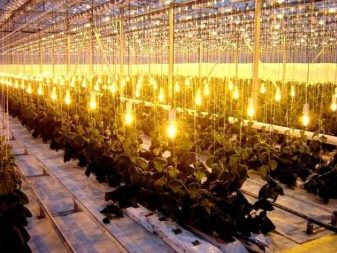

The plant uses red and blue for energy and growth. This bicolor works very well together, although they can be present separately. Orange and red can be used during flowering and fruiting, but not too intensely. If you want the seedlings not to be thin, but on the contrary, to grow in width, then you should turn on the lamps with blue light.
For vegetables such as tomatoes or peppers, the exposure time to artificial light is at least 14 hours, and the rest period is at least 6 hours every day.
The list of crops that thrive under artificial light includes:
- tomato;
- eggplant;
- beans;
- greens: lettuce, spinach, etc.
- root vegetables - carrots, beets, turnips;
- broccoli;
- spices.
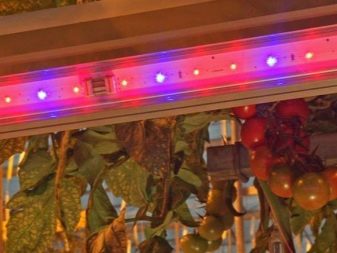

On the equipment you can see the mark: "natural", "full spectrum" or "balanced". It costs more than conventional incandescent bulbs, which mainly supply red light or cool white, similar to natural.
A full spectrum fixture usually means that the lamp outputs a wide continuous light across most PAR ranges. This is by no means a standard, just a manufacturer's choice.
At the moment, technology is moving away from using specific bands, instead, the industry is focusing on providing the most usable spectrum. You can see this if you look at the products of most reputable companies that refuse to produce pink and purple lighting fixtures and replace their LEDs with white ones.
The exact hue or color temperature of white light is determined by the dominant blue LED wavelength and phosphor composition. The thickness of the phosphor coating produces the necessary changes in the color temperature of the diode.
The ideal light is one that follows the spectrum of our sun, allowing us to adjust the intensity according to the needs of the plants.


Rating of the best models
In the rating of the best phytolamps with attractive power, several stand out.
"Luchok"
The 16 W "beam" has a full spectrum, the light does not irritate the eyes. You can use it for seedlings and indoor plants.
Hanging the lamp should be at least 800 mm from planting.

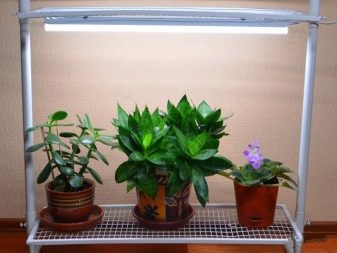
Jazzway PPG T8
The Jazzway PPG T8 is easy to find in the market as it is so popular. It has a good ratio of blue and red spectrum, it is 1/5. It weighs little, it is supplied for sale with fixtures, by means of which it is possible to install several lamps at the same time.


SPB-T8-Fito
"SPB-T8-Fito" helps even a novice gardener to get strong and healthy seedlings.
It differs in that it does not generate heat, so it can be installed at any distance.


Professional recommendations
Plants use only part of the visible light spectrum for photosynthesis. While our eyes are most sensitive in the middle of this range, plants are more sensitive to the ends of the visible spectrum. They contain chlorophyll and other pigments that absorb specific wavelengths of light. By absorbing energy from them, they can create their own in order to turn it into fuel for additional growth.
Professionals give advice on which lamp to choose for your home:
- if it is supposed that it will help the plant in the living room, then the light should be safe for the eyes;
- for greenhouses and large plantings, it is best to select lamps with a large spectrum dispersion;
- if you do not want to spend money twice, equipment with a full range is ideal;
- LED lamps are one of the most durable, so it is better to opt for them.


Before buying equipment, there are a few questions worth answering.
- How big is the area? Need to light up an entire room, just a corner of it, or just a spot on the table?
- What kinds of plants are you supposed to grow?
- How many plants do you need to illuminate?
You will need to find a way to hang the lamps. The best way to equip a space is by hanging them on hooks in the ceiling.
You don't need to keep the lights on 24 hours a day. Plants need some time to rest and grow healthy. The amount of time a decision is made to leave the light on will vary depending on the type of flower and the goal in mind.
See the following video for an overview of lamps.













The comment was sent successfully.